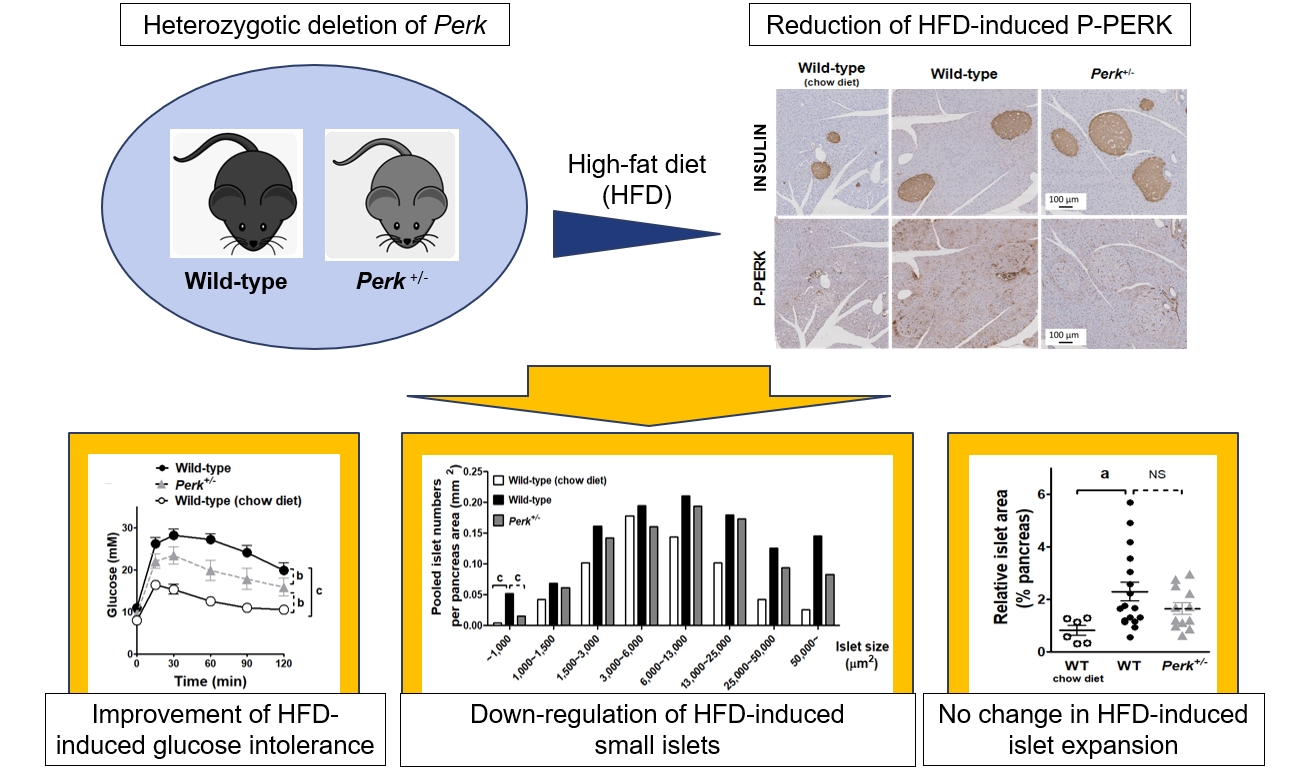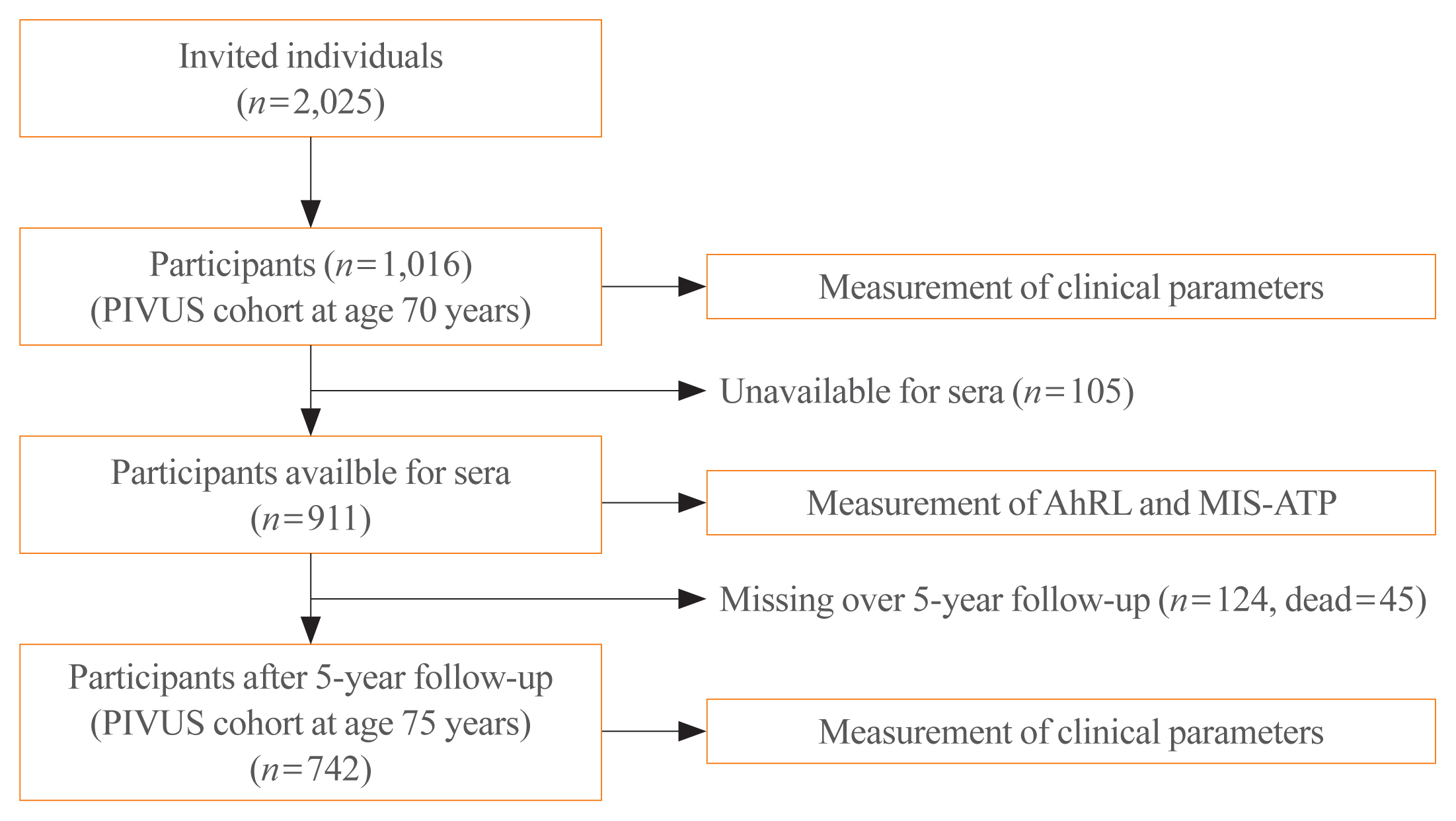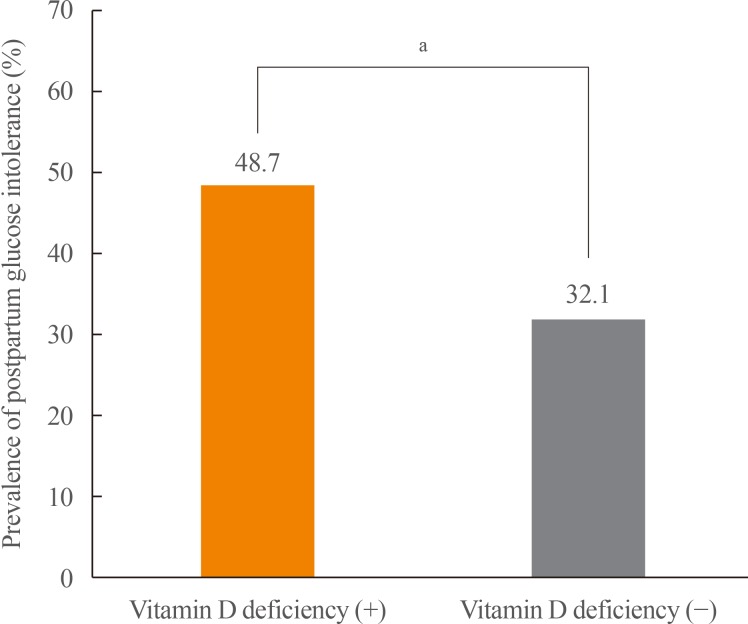Search
- Page Path
- HOME > Search
- Diabetes, obesity and metabolism
- Partial Deletion of Perk Improved High-Fat Diet-Induced Glucose Intolerance in Mice
- Jooyeop Lee, Min Joo Kim, Seoil Moon, Ji Yoon Lim, Kyong Soo Park, Hye Seung Jung
- Endocrinol Metab. 2023;38(6):782-787. Published online November 13, 2023
- DOI: https://doi.org/10.3803/EnM.2023.1738

- 727 View
- 45 Download
-
 Abstract
Abstract
 PDF
PDF Supplementary Material
Supplementary Material PubReader
PubReader  ePub
ePub - Although pancreatic endoplasmic reticulum kinase (PERK) is indispensable to beta cells, low-dose PERK inhibitor improved glucose- stimulated insulin secretion (GSIS) and hyperglycemia in diabetic mice. Current study examined if partial deletion of Perk (Perk+/-) recapitulated the effects of PERK inhibitor, on the contrary to the complete deletion. Perk+/- mice and wild-type controls were fed with a high-fat diet (HFD) for 23 weeks. Glucose tolerance was evaluated along with serum insulin levels and islet morphology. Perk+/- mice on normal chow were comparable to wild-type mice in various metabolic features. HFD-induced obesity was not influenced by Perk reduction; however, HFD-induced glucose intolerance was significantly improved since 15-week HFD. HFD-induced compromises in GSIS were relieved by Perk reduction, accompanied by reductions in phosphorylated PERK and activating transcription factor 4 (ATF4) in the islets. Meanwhile, HFD-induced islet expansion was not significantly affected. In summary, partial deletion of Perk improved glucose tolerance and GSIS impaired by diet-induced obesity, without changes in body weights or islet mass.

- Clinical Study
- High Serum-Induced AhRL Is Associated with Prevalent Metabolic Syndrome and Future Impairment of Glucose Tolerance in the Elderly
- Youngmi Kim Pak, Hoon Sung Choi, Wook Ha Park, Suyeol Im, P. Monica Lind, Lars Lind, Hong Kyu Lee
- Endocrinol Metab. 2021;36(2):436-446. Published online April 19, 2021
- DOI: https://doi.org/10.3803/EnM.2020.883

- 3,915 View
- 110 Download
- 2 Web of Science
- 2 Crossref
-
 Abstract
Abstract
 PDF
PDF Supplementary Material
Supplementary Material PubReader
PubReader  ePub
ePub - Background
High circulating levels of dioxins and dioxin-like chemicals, acting via the aryl hydrocarbon receptor (AhR), have previously been linked to diabetes. We now investigated whether the serum AhR ligands (AhRL) were higher in subjects with metabolic syndrome (MetS) and in subjects who had developed a worsened glucose tolerance over time.
Methods
Serum AhRL at baseline was measured by a cell-based AhRL activity assay in 70-year-old subjects (n=911) in the Prospective Investigation of the Vasculature in Uppsala Seniors (PIVUS) study. The main outcome measures were prevalent MetS and worsening of glucose tolerance over 5 years of follow-up.
Results
AhRL was significantly elevated in subjects with prevalent MetS as compared to those without MetS, following adjustment for sex, smoking, exercise habits, alcohol intake and educational level (P=0.009). AhRL at baseline was higher in subjects who developed impaired fasting glucose or diabetes at age 75 years than in those who remained normoglycemic (P=0.0081). The odds ratio (OR) of AhRL for worsening glucose tolerance over 5 years was 1.43 (95% confidence interval [CI], 1.13 to 1.81; P=0.003, continuous variables) and 2.81 (95% CI, 1.31 to 6.02; P=0.008, in the highest quartile) adjusted for sex, life style factors, body mass index, and glucose.
Conclusion
These findings support a large body of epidemiologic evidence that exposure to AhR transactivating substances, such as dioxins and dioxin-like chemicals, might be involved in the pathogenesis of MetS and diabetes development. Measurement of serum AhRL in humans can be a useful tool in predicting the onset of metabolic disorders. -
Citations
Citations to this article as recorded by- An Interactive Online App for Predicting Diabetes via Machine Learning from Environment-Polluting Chemical Exposure Data
Rosy Oh, Hong Kyu Lee, Youngmi Kim Pak, Man-Suk Oh
International Journal of Environmental Research and Public Health.2022; 19(10): 5800. CrossRef - A Novel Aryl Hydrocarbon Receptor Antagonist HBU651 Ameliorates Peripheral and Hypothalamic Inflammation in High-Fat Diet-Induced Obese Mice
Sora Kang, Aden Geonhee Lee, Suyeol Im, Seung Jun Oh, Hye Ji Yoon, Jeong Ho Park, Youngmi Kim Pak
International Journal of Molecular Sciences.2022; 23(23): 14871. CrossRef
- An Interactive Online App for Predicting Diabetes via Machine Learning from Environment-Polluting Chemical Exposure Data

- Diabetes
- Comparison of Serum PCSK9 Levels in Subjects with Normoglycemia, Impaired Fasting Glucose, and Impaired Glucose Tolerance
- Eugene Han, Nan Hee Cho, Seong-Su Moon, Hochan Cho
- Endocrinol Metab. 2020;35(2):480-483. Published online June 24, 2020
- DOI: https://doi.org/10.3803/EnM.2020.35.2.480
- 4,955 View
- 115 Download
- 4 Web of Science
- 3 Crossref
-
 Abstract
Abstract
 PDF
PDF PubReader
PubReader  ePub
ePub - We investigated proprotein convertase subtilisin/kexin type 9 (PCSK9) concentrations in individuals with normoglycemia, impaired fasting glucose (IFG), and impaired glucose tolerance (IGT). This was a pilot, cross-sectional study including 92 individuals who had not been diagnosed with or treated for diabetes. We measured PCSK9 levels in three groups of subjects; namely, normoglycemia (n=57), IFG (n=21), and IGT (n=14). Individuals with IFG and IGT showed higher PCSK9 concentrations than those in the normoglycemic group, with the highest serum PCSK9 concentrations found in individuals with IGT (55.25±15.29 ng/mL for normoglycemia, 63.47±17.78 ng/mL for IFG, 72.22±15.46 ng/mL for IGT, analysis of variance P=0.001). There were no significant differences in high- or low-density lipoprotein cholesterol among groups. Serum PCSK9 levels are increased in patients with prediabetes compared to subjects with normoglycemia.
-
Citations
Citations to this article as recorded by- Emerging Insights on the Diverse Roles of Proprotein Convertase Subtilisin/Kexin Type 9 (PCSK9) in Chronic Liver Diseases: Cholesterol Metabolism and Beyond
Thomas Grewal, Christa Buechler
International Journal of Molecular Sciences.2022; 23(3): 1070. CrossRef - Insight into the Evolving Role of PCSK9
Mateusz Maligłówka, Michał Kosowski, Marcin Hachuła, Marcin Cyrnek, Łukasz Bułdak, Marcin Basiak, Aleksandra Bołdys, Grzegorz Machnik, Rafał Jakub Bułdak, Bogusław Okopień
Metabolites.2022; 12(3): 256. CrossRef - Proprotein convertase subtilisin/kexin type 9 (PCSK9) levels are not associated with severity of liver disease and are inversely related to cholesterol in a cohort of thirty eight patients with liver cirrhosis
Susanne Feder, Reiner Wiest, Thomas S. Weiss, Charalampos Aslanidis, Doris Schacherer, Sabrina Krautbauer, Gerhard Liebisch, Christa Buechler
Lipids in Health and Disease.2021;[Epub] CrossRef
- Emerging Insights on the Diverse Roles of Proprotein Convertase Subtilisin/Kexin Type 9 (PCSK9) in Chronic Liver Diseases: Cholesterol Metabolism and Beyond

- Clinical Study
- Vitamin D Deficiency at Mid-Pregnancy Is Associated with a Higher Risk of Postpartum Glucose Intolerance in Women with Gestational Diabetes Mellitus
- Kyung-Soo Kim, Seok Won Park, Yong-Wook Cho, Soo-Kyung Kim
- Endocrinol Metab. 2020;35(1):97-105. Published online March 19, 2020
- DOI: https://doi.org/10.3803/EnM.2020.35.1.97

- 5,515 View
- 117 Download
- 9 Web of Science
- 8 Crossref
-
 Abstract
Abstract
 PDF
PDF PubReader
PubReader  ePub
ePub Background To evaluate the association between serum 25-hydroxyvitamin D (25(OH)D) at mid-pregnancy and postpartum glucose intolerance in women with gestational diabetes mellitus (GDM).
Methods We enrolled 348 pregnant women diagnosed with GDM from August 2012 to October 2016. We measured serum 25(OH)D levels at mid-pregnancy and carried out a 75-g oral glucose tolerance test at 6 to 12 weeks after delivery. Vitamin D deficiency was defined as serum 25(OH)D <20 ng/mL.
Results The prevalence of vitamin D deficiency was 76.7% (
n =267). Women with vitamin D deficiency had a higher prevalence of postpartum glucose intolerance than did those without vitamin D deficiency (48.7% vs. 32.1%,P =0.011). Serum 25(OH)D level was negatively correlated with hemoglobin A1c at antepartum and postpartum period (antepartum:r =−0.186,P =0.001; postpartum:r =−0.129,P =0.047). Homeostasis model assessment of β-cell function was positively correlated with serum 25(OH)D level only postpartum (r =0.138,P =0.035). The risk of postpartum glucose intolerance was 2.00 times (95% confidence interval, 1.13 to 3.55) higher in women with vitamin D deficiency than in those without vitamin D deficiency (P =0.018).Conclusion In women with GDM, vitamin D deficiency at mid-pregnancy is associated with an elevated risk of postpartum glucose intolerance.
-
Citations
Citations to this article as recorded by- Vitamin D Supplementation for the Outcomes of Patients with Gestational Diabetes Mellitus and Neonates: A Meta-Analysis and Systematic Review
Chunfeng Wu, Yang Song, Xueying Wang, Pier P. Sainaghi
International Journal of Clinical Practice.2023; 2023: 1. CrossRef - Influence of hypovitaminosis D during pregnancy on glycemic and lipid profile, inflammatory indicators and anthropometry of pregnant and newborn
Sara de Figueiredo dos Santos, Paula Normando dos Reis Costa, Thaise Gasser Gouvêa, Nathalia Ferreira Antunes de Almeida, Felipe de Souza Cardoso
Clinical Nutrition ESPEN.2023; 54: 81. CrossRef - Risk factors associated with early postpartum glucose intolerance in women with a history of gestational diabetes mellitus: a systematic review and meta-analysis
Zhe Liu, Qianghuizi Zhang, Leyang Liu, Weiwei Liu
Endocrine.2023; 82(3): 498. CrossRef - Postprandial Free Fatty Acids at Mid-Pregnancy Increase the Risk of Large-for-Gestational-Age Newborns in Women with Gestational Diabetes Mellitus
So-Yeon Kim, Young Shin Song, Soo-Kyung Kim, Yong-Wook Cho, Kyung-Soo Kim
Diabetes & Metabolism Journal.2022; 46(1): 140. CrossRef - Effect of Evidence-Based Diet Nursing on Intestinal Flora and Maternal and Infant Prognosis in Patients with Gestational Diabetes
Ying Jiang, Chunbo Qiu, Yuanping Wang, Bin He, Peng-Yue Zhang
Evidence-Based Complementary and Alternative Medicine.2022; 2022: 1. CrossRef - Vitamin D in gestational diabetes: A broadened frontier
Yu Zhu, Ling Li, Ping Li
Clinica Chimica Acta.2022; 537: 51. CrossRef - The Clinical Characteristics of Gestational Diabetes Mellitus in Korea: A National Health Information Database Study
Kyung-Soo Kim, Sangmo Hong, Kyungdo Han, Cheol-Young Park
Endocrinology and Metabolism.2021; 36(3): 628. CrossRef - Fetal Abdominal Obesity Detected At 24 to 28 Weeks of Gestation Persists Until Delivery Despite Management of Gestational Diabetes Mellitus (Diabetes Metab J 2021;45:547-57)
Kyung-Soo Kim
Diabetes & Metabolism Journal.2021; 45(6): 966. CrossRef
- Vitamin D Supplementation for the Outcomes of Patients with Gestational Diabetes Mellitus and Neonates: A Meta-Analysis and Systematic Review

- A Case of Cured Diabetes Mellitus after Pheochromocytoma Removal.
- Chang Kyun Hong, Yu Bae Ahn, Sul Hye Kim, Young Sik Woo, Seoung Goo Lee, Seung Hyun Ko, Ho Ki Song, Kun Ho Yoon, Moo Il Kang, Bong Yeon Cha, Kwang Woo Lee, Ho Young Son, Sung Koo Kang
- J Korean Endocr Soc. 2001;16(4-5):502-507. Published online October 1, 2001
- 1,160 View
- 17 Download
-
 Abstract
Abstract
 PDF
PDF - Pheochromocytoma is usually associated with a combination of various clinical manifestations caused by the overproduction of catecholamines. It is frequently accompanied by impaired glucose tolerance operating through 2-and-adrenergic mechanisms. A 41-year-old-woman was admitted to the hospital because of poorly-controlled diabetes mellitus and hypertension. She had suffered intermittent paroxysmal attacks of headache and chest discomfort and had been treated intermittently over a 2 year period for diabetes mellitus and hypertension. At admission, the levels of serum epinephrine, norepinephrine urinary excretion of total metanephrine, and VMA were all abnormally elevated. Adrenal CT showed a well-defined, homogenous mass in the right adrenal region and the tumor was diagnosed as pheochromocytoma. After tumor resection, the increased blood level of catecholamines, the urinary excretion of total metanephrine, and VMA were normalized, as was the hyperglycemia state. Diabetes mellitus of the patient was considered permanently resolved after tumor removal by the result of glucose tolerance in 75g oral glucose tolerance test.


 KES
KES

 First
First Prev
Prev



